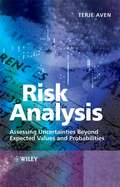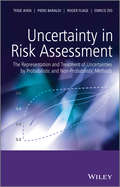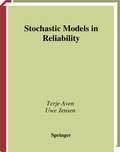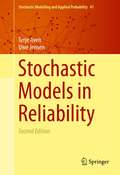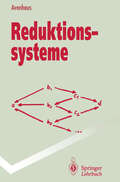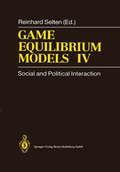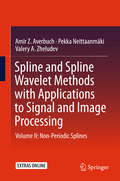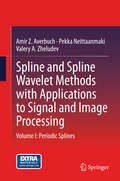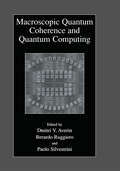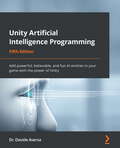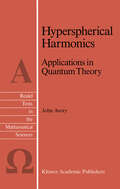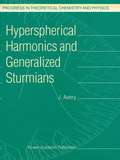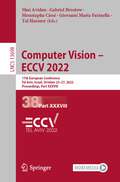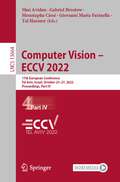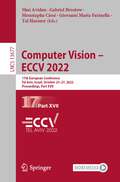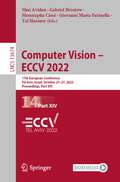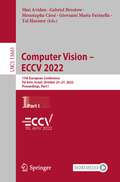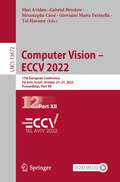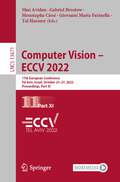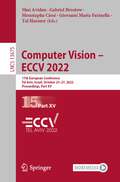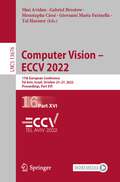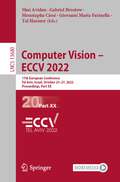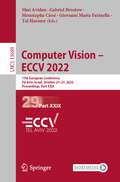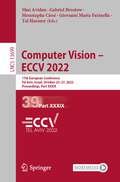- Table View
- List View
Risk Analysis: Assessing Uncertainties Beyond Expected Values and Probabilities
by Terje AvenEveryday we face decisions that carry an element of risk and uncertainty. The ability to analyze, predict, and prepare for the level of risk entailed by these decisions is, therefore, one of the most constant and vital skills needed for analysts, scientists and managers. Risk analysis can be defined as a systematic use of information to identify hazards, threats and opportunities, as well as their causes and consequences, and then express risk. In order to successfully develop such a systematic use of information, those analyzing the risk need to understand the fundamental concepts of risk analysis and be proficient in a variety of methods and techniques. Risk Analysis adopts a practical, predictive approach and guides the reader through a number of applications. Risk Analysis: Provides an accessible and concise guide to performing risk analysis in a wide variety of fields, with minimal prior knowledge required. Adopts a broad perspective on risk, with focus on predictions and highlighting uncertainties beyond expected values and probabilities, allowing a more flexible approach than traditional statistical analysis. Acknowledges that expected values and probabilities could produce poor predictions - surprises may occur. Emphasizes the planning and use of risk analyses, rather than just the risk analysis methods and techniques, including the statistical analysis tools. Features many real-life case studies from a variety of applications and practical industry problems, including areas such as security, business and economy, transport, oil & gas and ICT (Information and Communication Technology). Forms an ideal companion volume to Aven’s previous Wiley text Foundations of Risk Analysis. Professor Aven’s previous book Foundations of Risk Analysis presented and discussed several risk analysis approaches and recommended a predictive approach. This new text expands upon this predictive approach, exploring further the risk analysis principles, concepts, methods and models in an applied format. This book provides a useful and practical guide to decision-making, aimed at professionals within the risk analysis and risk management field.
Uncertainty in Risk Assessment: The Representation and Treatment of Uncertainties by Probabilistic and Non-Probabilistic Methods
by Terje Aven Piero Baraldi Roger Flage Enrico ZioExplores methods for the representation and treatment of uncertainty in risk assessment In providing guidance for practical decision-making situations concerning high-consequence technologies (e.g., nuclear, oil and gas, transport, etc.), the theories and methods studied in Uncertainty in Risk Assessment have wide-ranging applications from engineering and medicine to environmental impacts and natural disasters, security, and financial risk management. The main focus, however, is on engineering applications. While requiring some fundamental background in risk assessment, as well as a basic knowledge of probability theory and statistics, Uncertainty in Risk Assessment can be read profitably by a broad audience of professionals in the field, including researchers and graduate students on courses within risk analysis, statistics, engineering, and the physical sciences. Uncertainty in Risk Assessment: Illustrates the need for seeing beyond probability to represent uncertainties in risk assessment contexts. Provides simple explanations (supported by straightforward numerical examples) of the meaning of different types of probabilities, including interval probabilities, and the fundamentals of possibility theory and evidence theory. Offers guidance on when to use probability and when to use an alternative representation of uncertainty. Presents and discusses methods for the representation and characterization of uncertainty in risk assessment. Uses examples to clearly illustrate ideas and concepts.
Uncertainty in Risk Assessment: The Representation and Treatment of Uncertainties by Probabilistic and Non-Probabilistic Methods
by Terje Aven Piero Baraldi Roger Flage Enrico ZioExplores methods for the representation and treatment of uncertainty in risk assessment In providing guidance for practical decision-making situations concerning high-consequence technologies (e.g., nuclear, oil and gas, transport, etc.), the theories and methods studied in Uncertainty in Risk Assessment have wide-ranging applications from engineering and medicine to environmental impacts and natural disasters, security, and financial risk management. The main focus, however, is on engineering applications. While requiring some fundamental background in risk assessment, as well as a basic knowledge of probability theory and statistics, Uncertainty in Risk Assessment can be read profitably by a broad audience of professionals in the field, including researchers and graduate students on courses within risk analysis, statistics, engineering, and the physical sciences. Uncertainty in Risk Assessment: Illustrates the need for seeing beyond probability to represent uncertainties in risk assessment contexts. Provides simple explanations (supported by straightforward numerical examples) of the meaning of different types of probabilities, including interval probabilities, and the fundamentals of possibility theory and evidence theory. Offers guidance on when to use probability and when to use an alternative representation of uncertainty. Presents and discusses methods for the representation and characterization of uncertainty in risk assessment. Uses examples to clearly illustrate ideas and concepts.
Stochastic Models in Reliability (Stochastic Modelling and Applied Probability #41)
by Terje Aven Uwe JensenA comprehensive up-to-date presentation of some of the classical areas of reliability, based on a more advanced probabilistic framework using the modern theory of stochastic processes. This framework allows analysts to formulate general failure models, establish formulae for computing various performance measures, as well as determine how to identify optimal replacement policies in complex situations.
Stochastic Models in Reliability (Stochastic Modelling and Applied Probability #41)
by Terje Aven Uwe JensenThis book provides a comprehensive up-to-date presentation of some of the classical areas of reliability, based on a more advanced probabilistic framework using the modern theory of stochastic processes. This framework allows analysts to formulate general failure models, establish formulae for computing various performance measures, as well as determine how to identify optimal replacement policies in complex situations. In this second edition of the book, two major topics have been added to the original version: copula models which are used to study the effect of structural dependencies on the system reliability; and maintenance optimization which highlights delay time models under safety constraints. Terje Aven is Professor of Reliability and Risk Analysis at University of Stavanger, Norway. Uwe Jensen is working as a Professor at the Institute of Applied Mathematics and Statistics of the University of Hohenheim in Stuttgart, Germany. Review of first edition: "This is an excellent book on mathematical, statistical and stochastic models in reliability. The authors have done an excellent job of unifying some of the stochastic models in reliability. The book is a good reference book but may not be suitable as a textbook for students in professional fields such as engineering. This book may be used for graduate level seminar courses for students who have had at least the first course in stochastic processes and some knowledge of reliability mathematics. It should be a good reference book for researchers in reliability mathematics." --Mathematical Reviews (2000)
Reduktionssysteme: Rechnen und Schließen in gleichungsdefinierten Strukturen (Springer-Lehrbuch)
by Jürgen AvenhausGame Equilibrium Models IV: Social and Political Interaction
by R. Avenhaus R. Gardner W. Güth R. K. Huber M. Mitzkewitz A. Okada B. O'Neill J. Pool J. Potters R. Selten F. Van Winden D. Wendt S. ZamirThe four volumes of Game Equilibrium Models present applications of non-cooperative game theory. Problems of strategic interaction arising in biology, economics, political science and the social sciences in general are treated in 42 papers on a wide variety of subjects. Internationally known authors with backgrounds in various disciplines have contributed original research. The reader finds innovative modelling combined with advanced methods of analysis. The four volumes are the outcome of a research year at the Center for Interdisciplinary Studies of the University of Bielefeld. The close interaction of an international interdisciplinary group of researchers has produced an unusual collection of remarkable results of great interest for everybody who wants to be informed on the scope, potential, and future direction of work in applied game theory. Volume IV Social and Political Interaction contains game equilibrium models focussing on social and political interaction within communities or states or between states, i.e. national and international social and political interaction. Specific aspects of those interactions are modelled as non-cooperative games and their equilibria are analysed.
Spline and Spline Wavelet Methods with Applications to Signal and Image Processing: Volume II: Non-Periodic Splines
by Amir Z. Averbuch Pekka Neittaanmäki Valery A. ZheludevThis book presents various contributions of splines to signal and image processing from a unified perspective that is based on the Zak transform (ZT). It expands the methodology from periodic splines, which were presented in the first volume, to non-periodic splines. Together, these books provide a universal toolbox accompanied by MATLAB software for manipulating polynomial and discrete splines, spline-based wavelets, wavelet packets and wavelet frames for signal/ image processing applications.In this volume, we see that the ZT provides an integral representation of discrete and polynomial splines, which, to some extent, is similar to Fourier integral. The authors explore elements of spline theory and design, and consider different types of polynomial and discrete splines. They describe applications of spline-based wavelets to data compression. These splines are useful for real-time signal processing and, in particular, real-time wavelet and frame transforms.Further topics addressed in this volume include: "global" splines, such as interpolating, self-dual and smoothing, whose supports are infinite; the compactly supported quasi-interpolating and smoothing splines including quasi-interpolating splines on non-uniform grids; and cubic Hermite splines as a source for the design of multiwavelets and multiwavelet frames.Readers from various disciplines including engineering, computer science and mathematical information technology will find the descriptions of algorithms, applications and software in this book especially useful.
Spline and Spline Wavelet Methods with Applications to Signal and Image Processing: Volume I: Periodic Splines
by Amir Z. Averbuch Pekka Neittaanmaki Valery A. ZheludevThis volume provides universal methodologies accompanied by Matlab software to manipulate numerous signal and image processing applications. It is done with discrete and polynomial periodic splines. Various contributions of splines to signal and image processing from a unified perspective are presented. This presentation is based on Zak transform and on Spline Harmonic Analysis (SHA) methodology. SHA combines approximation capabilities of splines with the computational efficiency of the Fast Fourier transform. SHA reduces the design of different spline types such as splines, spline wavelets (SW), wavelet frames (SWF) and wavelet packets (SWP) and their manipulations by simple operations. Digital filters, produced by wavelets design process, give birth to subdivision schemes. Subdivision schemes enable to perform fast explicit computation of splines' values at dyadic and triadic rational points. This is used for signals and images up sampling. In addition to the design of a diverse library of splines, SW, SWP and SWF, this book describes their applications to practical problems. The applications include up sampling, image denoising, recovery from blurred images, hydro-acoustic target detection, to name a few. The SWF are utilized for image restoration that was degraded by noise, blurring and loss of significant number of pixels. The book is accompanied by Matlab based software that demonstrates and implements all the presented algorithms. The book combines extensive theoretical exposure with detailed description of algorithms, applications and software.The Matlab software can be downloaded from http://extras.springer.com
Macroscopic Quantum Coherence and Quantum Computing
by Dmitri V. Averin Berardo Ruggiero Paolo SilvestriniThis volume is an outgrowth of the Second International Workshop on Macroscopic Quantum Coherence and Computing held in Napoli, Italy, in June 2000. This workshop gathered a number of experts from the major Universities and Research Institutions of several countries. The choice of the location, which recognizes the role and the traditions of Naples in this field, guaranteed the participants a stimulating atmosphere. The aim of the workshop has been to report on the recent theoretical and experimental results on the macroscopic quantum coherence of macroscopic systems. Particular attention was devoted to Josephson devices. The correlation with other atomic and molecular systems, exhibiting a macroscopic quantum behaviour, was also discussed. The seminars provided both historical overview and recent theoretical ground on the topic, as well as information on new experimental results relative to the quantum computing area. The first workshop on this topic, held in Napoli in 1998, has been ennobled by important reports on observations of Macroscopic Quantum Coherence in mesoscopic systems. The current workshop proposed, among many stimulating results, the first observations of Macroscopic Quantum Coherence between macroscopically distinct fluxoid states in rf SQUIDs, 20 years after the Leggett's proposal to experimentally test the quantum behavior of macroscopic systems. Reports on observations of quantum behaviour in molecular and magnetic systems, small Josephson devices, quantum dots have also been particularly stimulating in view of the realization of several possible q-bits.
Unity Artificial Intelligence Programming: Add Powerful, Believable, And Fun Ai Entities In Your Game With The Power Of Unity
by Davide AversaAdd powerful, believable, and fun AI entities in your game with the power of Unity
Hyperspherical Harmonics: Applications in Quantum Theory (Reidel Texts in the Mathematical Sciences #5)
by John S. Averywhere d 3 3)2 ( L x - -- i3x j3x j i i>j Thus the Gegenbauer polynomials play a role in the theory of hyper spherical harmonics which is analogous to the role played by Legendre polynomials in the familiar theory of 3-dimensional spherical harmonics; and when d = 3, the Gegenbauer polynomials reduce to Legendre polynomials. The familiar sum rule, in 'lrlhich a sum of spherical harmonics is expressed as a Legendre polynomial, also has a d-dimensional generalization, in which a sum of hyper spherical harmonics is expressed as a Gegenbauer polynomial (equation (3-27»: The hyper spherical harmonics which appear in this sum rule are eigenfunctions of the generalized angular monentum 2 operator A , chosen in such a way as to fulfil the orthonormality relation: VIe are all familiar with the fact that a plane wave can be expanded in terms of spherical Bessel functions and either Legendre polynomials or spherical harmonics in a 3-dimensional space. Similarly, one finds that a d-dimensional plane wave can be expanded in terms of HYPERSPHERICAL HARMONICS xii "hyperspherical Bessel functions" and either Gegenbauer polynomials or else hyperspherical harmonics (equations ( 4 - 27) and ( 4 - 30) ) : 00 ik·x e = (d-4)!!A~oiA(d+2A-2)j~(kr)C~(~k'~) 00 (d-2)!!I(0) 2: iAj~(kr) 2:Y~ (["2k)Y (["2) A A=O ). l). l)J where I(O) is the total solid angle. This expansion of a d-dimensional plane wave is useful when we wish to calculate Fourier transforms in a d-dimensional space.
Hyperspherical Harmonics and Generalized Sturmians (Progress in Theoretical Chemistry and Physics #4)
by John S. AveryComputer Vision – ECCV 2022: 17th European Conference, Tel Aviv, Israel, October 23–27, 2022, Proceedings, Part XXXVIII (Lecture Notes in Computer Science #13698)
by Shai Avidan Gabriel Brostow Moustapha Cissé Giovanni Maria Farinella Tal HassnerThe 39-volume set, comprising the LNCS books 13661 until 13699, constitutes the refereed proceedings of the 17th European Conference on Computer Vision, ECCV 2022, held in Tel Aviv, Israel, during October 23–27, 2022. The 1645 papers presented in these proceedings were carefully reviewed and selected from a total of 5804 submissions. The papers deal with topics such as computer vision; machine learning; deep neural networks; reinforcement learning; object recognition; image classification; image processing; object detection; semantic segmentation; human pose estimation; 3d reconstruction; stereo vision; computational photography; neural networks; image coding; image reconstruction; object recognition; motion estimation.
Computer Vision – ECCV 2022: 17th European Conference, Tel Aviv, Israel, October 23–27, 2022, Proceedings, Part IV (Lecture Notes in Computer Science #13664)
by Shai Avidan Gabriel Brostow Moustapha Cissé Giovanni Maria Farinella Tal HassnerThe 39-volume set, comprising the LNCS books 13661 until 13699, constitutes the refereed proceedings of the 17th European Conference on Computer Vision, ECCV 2022, held in Tel Aviv, Israel, during October 23–27, 2022. The 1645 papers presented in these proceedings were carefully reviewed and selected from a total of 5804 submissions. The papers deal with topics such as computer vision; machine learning; deep neural networks; reinforcement learning; object recognition; image classification; image processing; object detection; semantic segmentation; human pose estimation; 3d reconstruction; stereo vision; computational photography; neural networks; image coding; image reconstruction; object recognition; motion estimation.
Computer Vision – ECCV 2022: 17th European Conference, Tel Aviv, Israel, October 23–27, 2022, Proceedings, Part XVII (Lecture Notes in Computer Science #13677)
by Shai Avidan Gabriel Brostow Moustapha Cissé Giovanni Maria Farinella Tal HassnerThe 39-volume set, comprising the LNCS books 13661 until 13699, constitutes the refereed proceedings of the 17th European Conference on Computer Vision, ECCV 2022, held in Tel Aviv, Israel, during October 23–27, 2022. The 1645 papers presented in these proceedings were carefully reviewed and selected from a total of 5804 submissions. The papers deal with topics such as computer vision; machine learning; deep neural networks; reinforcement learning; object recognition; image classification; image processing; object detection; semantic segmentation; human pose estimation; 3d reconstruction; stereo vision; computational photography; neural networks; image coding; image reconstruction; object recognition; motion estimation.
Computer Vision – ECCV 2022: 17th European Conference, Tel Aviv, Israel, October 23–27, 2022, Proceedings, Part XIV (Lecture Notes in Computer Science #13674)
by Shai Avidan Gabriel Brostow Moustapha Cissé Giovanni Maria Farinella Tal HassnerThe 39-volume set, comprising the LNCS books 13661 until 13699, constitutes the refereed proceedings of the 17th European Conference on Computer Vision, ECCV 2022, held in Tel Aviv, Israel, during October 23–27, 2022. The 1645 papers presented in these proceedings were carefully reviewed and selected from a total of 5804 submissions. The papers deal with topics such as computer vision; machine learning; deep neural networks; reinforcement learning; object recognition; image classification; image processing; object detection; semantic segmentation; human pose estimation; 3d reconstruction; stereo vision; computational photography; neural networks; image coding; image reconstruction; object recognition; motion estimation.
Computer Vision – ECCV 2022: 17th European Conference, Tel Aviv, Israel, October 23–27, 2022, Proceedings, Part I (Lecture Notes in Computer Science #13661)
by Shai Avidan Gabriel Brostow Moustapha Cissé Giovanni Maria Farinella Tal HassnerThe 39-volume set, comprising the LNCS books 13661 until 13699, constitutes the refereed proceedings of the 17th European Conference on Computer Vision, ECCV 2022, held in Tel Aviv, Israel, during October 23–27, 2022.The 1645 papers presented in these proceedings were carefully reviewed and selected from a total of 5804 submissions. The papers deal with topics such as computer vision; machine learning; deep neural networks; reinforcement learning; object recognition; image classification; image processing; object detection; semantic segmentation; human pose estimation; 3d reconstruction; stereo vision; computational photography; neural networks; image coding; image reconstruction; object recognition; motion estimation.
Computer Vision – ECCV 2022: 17th European Conference, Tel Aviv, Israel, October 23–27, 2022, Proceedings, Part XII (Lecture Notes in Computer Science #13672)
by Shai Avidan Gabriel Brostow Moustapha Cissé Giovanni Maria Farinella Tal HassnerThe 39-volume set, comprising the LNCS books 13661 until 13699, constitutes the refereed proceedings of the 17th European Conference on Computer Vision, ECCV 2022, held in Tel Aviv, Israel, during October 23–27, 2022. The 1645 papers presented in these proceedings were carefully reviewed and selected from a total of 5804 submissions. The papers deal with topics such as computer vision; machine learning; deep neural networks; reinforcement learning; object recognition; image classification; image processing; object detection; semantic segmentation; human pose estimation; 3d reconstruction; stereo vision; computational photography; neural networks; image coding; image reconstruction; object recognition; motion estimation.
Computer Vision – ECCV 2022: 17th European Conference, Tel Aviv, Israel, October 23–27, 2022, Proceedings, Part XI (Lecture Notes in Computer Science #13671)
by Shai Avidan Gabriel Brostow Moustapha Cissé Giovanni Maria Farinella Tal HassnerThe 39-volume set, comprising the LNCS books 13661 until 13699, constitutes the refereed proceedings of the 17th European Conference on Computer Vision, ECCV 2022, held in Tel Aviv, Israel, during October 23–27, 2022. The 1645 papers presented in these proceedings were carefully reviewed and selected from a total of 5804 submissions. The papers deal with topics such as computer vision; machine learning; deep neural networks; reinforcement learning; object recognition; image classification; image processing; object detection; semantic segmentation; human pose estimation; 3d reconstruction; stereo vision; computational photography; neural networks; image coding; image reconstruction; object recognition; motion estimation.
Computer Vision – ECCV 2022: 17th European Conference, Tel Aviv, Israel, October 23–27, 2022, Proceedings, Part XV (Lecture Notes in Computer Science #13675)
by Shai Avidan Gabriel Brostow Moustapha Cissé Giovanni Maria Farinella Tal HassnerThe 39-volume set, comprising the LNCS books 13661 until 13699, constitutes the refereed proceedings of the 17th European Conference on Computer Vision, ECCV 2022, held in Tel Aviv, Israel, during October 23–27, 2022. The 1645 papers presented in these proceedings were carefully reviewed and selected from a total of 5804 submissions. The papers deal with topics such as computer vision; machine learning; deep neural networks; reinforcement learning; object recognition; image classification; image processing; object detection; semantic segmentation; human pose estimation; 3d reconstruction; stereo vision; computational photography; neural networks; image coding; image reconstruction; object recognition; motion estimation.
Computer Vision – ECCV 2022: 17th European Conference, Tel Aviv, Israel, October 23–27, 2022, Proceedings, Part XVI (Lecture Notes in Computer Science #13676)
by Shai Avidan Gabriel Brostow Moustapha Cissé Giovanni Maria Farinella Tal HassnerThe 39-volume set, comprising the LNCS books 13661 until 13699, constitutes the refereed proceedings of the 17th European Conference on Computer Vision, ECCV 2022, held in Tel Aviv, Israel, during October 23–27, 2022. The 1645 papers presented in these proceedings were carefully reviewed and selected from a total of 5804 submissions. The papers deal with topics such as computer vision; machine learning; deep neural networks; reinforcement learning; object recognition; image classification; image processing; object detection; semantic segmentation; human pose estimation; 3d reconstruction; stereo vision; computational photography; neural networks; image coding; image reconstruction; object recognition; motion estimation.
Computer Vision – ECCV 2022: 17th European Conference, Tel Aviv, Israel, October 23–27, 2022, Proceedings, Part XX (Lecture Notes in Computer Science #13680)
by Shai Avidan Gabriel Brostow Moustapha Cissé Giovanni Maria Farinella Tal HassnerThe 39-volume set, comprising the LNCS books 13661 until 13699, constitutes the refereed proceedings of the 17th European Conference on Computer Vision, ECCV 2022, held in Tel Aviv, Israel, during October 23–27, 2022. The 1645 papers presented in these proceedings were carefully reviewed and selected from a total of 5804 submissions. The papers deal with topics such as computer vision; machine learning; deep neural networks; reinforcement learning; object recognition; image classification; image processing; object detection; semantic segmentation; human pose estimation; 3d reconstruction; stereo vision; computational photography; neural networks; image coding; image reconstruction; object recognition; motion estimation.
Computer Vision – ECCV 2022: 17th European Conference, Tel Aviv, Israel, October 23–27, 2022, Proceedings, Part XXIX (Lecture Notes in Computer Science #13689)
by Shai Avidan Gabriel Brostow Moustapha Cissé Giovanni Maria Farinella Tal HassnerThe 39-volume set, comprising the LNCS books 13661 until 13699, constitutes the refereed proceedings of the 17th European Conference on Computer Vision, ECCV 2022, held in Tel Aviv, Israel, during October 23–27, 2022. The 1645 papers presented in these proceedings were carefully reviewed and selected from a total of 5804 submissions. The papers deal with topics such as computer vision; machine learning; deep neural networks; reinforcement learning; object recognition; image classification; image processing; object detection; semantic segmentation; human pose estimation; 3d reconstruction; stereo vision; computational photography; neural networks; image coding; image reconstruction; object recognition; motion estimation.
Computer Vision – ECCV 2022: 17th European Conference, Tel Aviv, Israel, October 23–27, 2022, Proceedings, Part XXXIX (Lecture Notes in Computer Science #13699)
by Shai Avidan Gabriel Brostow Moustapha Cissé Giovanni Maria Farinella Tal HassnerThe 39-volume set, comprising the LNCS books 13661 until 13699, constitutes the refereed proceedings of the 17th European Conference on Computer Vision, ECCV 2022, held in Tel Aviv, Israel, during October 23–27, 2022. The 1645 papers presented in these proceedings were carefully reviewed and selected from a total of 5804 submissions. The papers deal with topics such as computer vision; machine learning; deep neural networks; reinforcement learning; object recognition; image classification; image processing; object detection; semantic segmentation; human pose estimation; 3d reconstruction; stereo vision; computational photography; neural networks; image coding; image reconstruction; object recognition; motion estimation.
